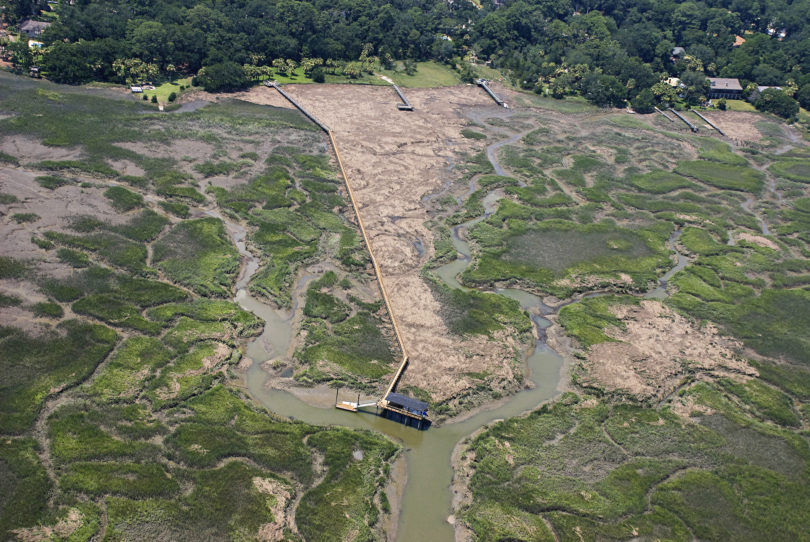The Circle Gallery at UGA’s College of Environment and Design will host Wrack and Ruin and the Creative Response: A Cautionary Environmental Tale, an exhibition featuring the work of Betsy Cain and David Kaminsky, from Feb. 6 through March 12.
A public opening reception will be held Feb. 6 from 4:30-6 p.m. in the gallery. The exhibition will feature original paintings and drawings, photographic extrapolations and film documentation by Cain and her husband, photographer Kaminsky.
Since 2007, the pair has been responding, as residents of the estuary and as artists, to the environmental impact of a neighbor’s 980-foot dock that reaches out into the shallow tidal estuary of Tom’s Creek on Wilmington Island in Savannah.
“The dock acts as a barricade to the seasonal, natural migration on high tides of dead marsh grass, Spartina Alterniflora, which sloughs off each spring as new grass shoots start their yearly cycle,” Cain said. “This dead marsh grass is an essential nutritive component to the ecosystem of Georgia’s vast salt marshes and is a biofuel for many organisms that make up this diverse and productive habitat.
“The dock collects this grass, called wrack, in such quantity and density in some years that the natural ebb and flow of tidal action in the smaller creeks is unable to dislodge it, and the wrack can stay in residence for up to six months with some fluctuations,” she added. “When this happens, the healthy marsh grass underneath is [starved] of light and oxygen, and the marsh grass dies. Depending on the length of time the wrack stays, the rhizomes or roots of the Spartina can be killed off as well, effectively denuding the area of the one sustaining life force that is so integral to the marsh’s survival.”
Cain and Kaminsky’s ongoing efforts have inspired action including a local community-level conservation effort and a public dialogue about the ethics of development in the coastal marshes.
“Our plan is for this exhibition and lecture to engage students in a creative reply to an environmental issue, which will lead to a deeper understanding of the impact of human endeavors in the landscape,” said Melissa Tufts, director of the Circle Gallery. “We hope it will also provide inspiration for productive, positive reaction to a challenging situation, both man-made and naturally occurring.”
Landscape architecture students from the College of Environment and Design will assist Cain and Kaminsky in the installation.








